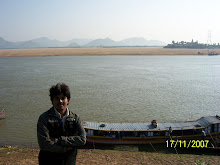
I first came to know of Wilkie Collins in inter 2nd year. We had “The Moonstone”, his most famous novel as a supplementary reader. T.S.Eliot, the famous literary critic, called it “the first, the longest and the best of modern English detective novels. I loved that book. I developed a lot of admiration for Collins and my love for England only grew a hundred fold after that novel. Moonstone inspired me to read all the novels of Wilkie Collins and the so when I found “The Woman in White” a few days ago at Odyssey, I was only too happy to grab a copy.
“The Woman in White” is a fantastic novel. Moonstone and this one are considered the best works of Collins and it certainly lived up to the fame. A detective story to the core, it has also got a beautiful love track running in parallel and the combination worked wonders. It certainly is one of those “Unputdownable” master pieces. I just want to throw a little light on the love story in particular. People often think love faces such obstacles as class and creed only in societies like India (I certainly felt so!) and not in countries like England. This book shatters those misconceptions. Wilkie Collins depicts the English society of nineteenth century in this novel. The hero of this novel, Walter Hartright is a poor artist and makes his living as a drawing teacher. He happens to come to Limmeridge House to teach the two step sisters Marian Halcombe and Laura Fairlie. Marian is not attractive but she is a very intelligent and spirited lady. Laura Fairlie on the other hand is a delicate and ethereal beauty. Walter falls in love with Laura not knowing that she was engaged. Thus the events unwind and the rest of the story follows. I have read expressions of love in quite a few novels and stories, but somehow I found the Walter’s love, so beautifully expressed by Wilkie Collins, fantastic. Here is an excerpt from the novel where Walter is caught between his love for Laura and his social standing:
“I know, now, that I should have questioned myself from the first. I should have asked why any room in the house was better than home to me when she entered it, and barren as a desert when she went out again – why I always noticed and remembered the little changes in her dress that I had noticed and remembered in no other woman’s before – why I saw her, heard her and touched her (when she shook hands at night and morning) as I has never seen, heard and touched any other woman in my life? I should have looked into my own heart, and found this new growth springing up there, and plucked it out while it was young. Why was this easiest, simplest work of self-culture always too much for me? The explanation has already been written already in three words that were many enough, and plain enough for my confession. I loved her.”
No wonder, long after I finished reading the novel, that the images of Walter and Luara and also of Marian (you need to read the novel to know Marian's importance) are still fresh in my mind.
“The Woman in White” is a fantastic novel. Moonstone and this one are considered the best works of Collins and it certainly lived up to the fame. A detective story to the core, it has also got a beautiful love track running in parallel and the combination worked wonders. It certainly is one of those “Unputdownable” master pieces. I just want to throw a little light on the love story in particular. People often think love faces such obstacles as class and creed only in societies like India (I certainly felt so!) and not in countries like England. This book shatters those misconceptions. Wilkie Collins depicts the English society of nineteenth century in this novel. The hero of this novel, Walter Hartright is a poor artist and makes his living as a drawing teacher. He happens to come to Limmeridge House to teach the two step sisters Marian Halcombe and Laura Fairlie. Marian is not attractive but she is a very intelligent and spirited lady. Laura Fairlie on the other hand is a delicate and ethereal beauty. Walter falls in love with Laura not knowing that she was engaged. Thus the events unwind and the rest of the story follows. I have read expressions of love in quite a few novels and stories, but somehow I found the Walter’s love, so beautifully expressed by Wilkie Collins, fantastic. Here is an excerpt from the novel where Walter is caught between his love for Laura and his social standing:
“I know, now, that I should have questioned myself from the first. I should have asked why any room in the house was better than home to me when she entered it, and barren as a desert when she went out again – why I always noticed and remembered the little changes in her dress that I had noticed and remembered in no other woman’s before – why I saw her, heard her and touched her (when she shook hands at night and morning) as I has never seen, heard and touched any other woman in my life? I should have looked into my own heart, and found this new growth springing up there, and plucked it out while it was young. Why was this easiest, simplest work of self-culture always too much for me? The explanation has already been written already in three words that were many enough, and plain enough for my confession. I loved her.”
No wonder, long after I finished reading the novel, that the images of Walter and Luara and also of Marian (you need to read the novel to know Marian's importance) are still fresh in my mind.


